Commonwealth Boomerang
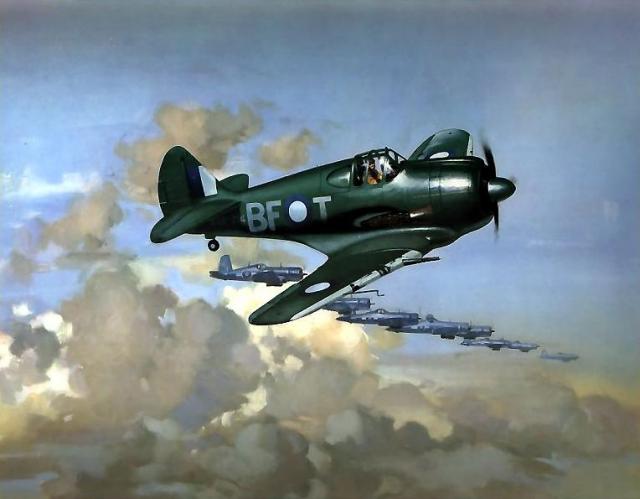
Boomerang - Squadron N°5 de la RAAF - No. 5 Squadron RAAF © Ray Honisett
Le Commonwealth Boomerang, chasseur à la ligne sympathique, fabriqué dans l'urgence de la guerre, est le seul chasseur de la seconde guerre mondiale a n'avoir remporté aucune victoire aérienne. Par contre, il se révéla un véritable champion de la chasse aux "snipers" japonais en volant (dangereusement) à la hauteur de la cime des arbres. Sur 250 appareils fabriqués, 118 furent perdus (toutes causes confondues) et de nombreux pilotes tués.
The Commonwealth Boomerang, fighter with sympathetic design, manufactured in the emergency of the war, is the only WWII fighter which never shot down any ennemy aircraft. But it was a real champion in japanese sniper fighting by flying (dangerously) at "tree top" altitude. Out of 250 aircrafts manufactured, 118 were lost (all causes together) and many pilots were killed.
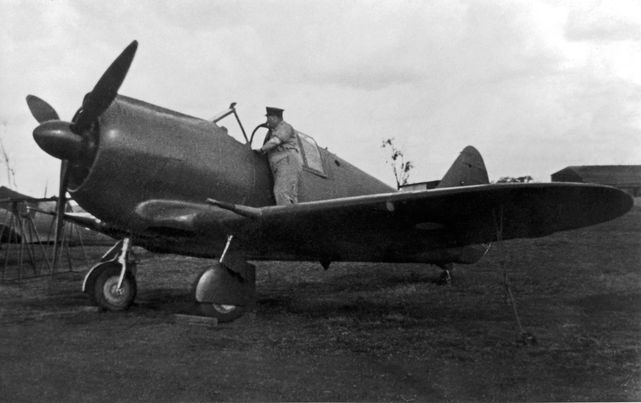
Boomerangs - Photo : source inconnue - Unknown source
Développement - Development
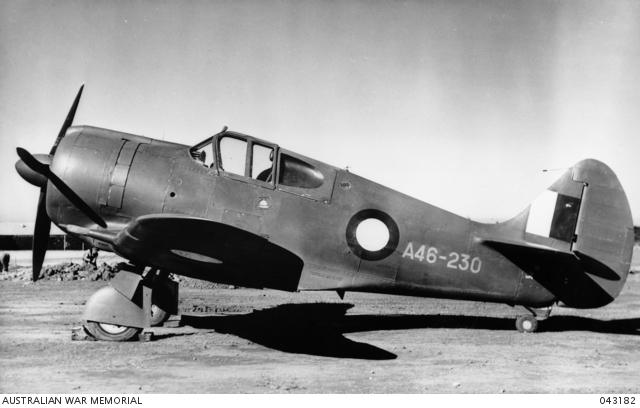
Boomerang - Picture with courtesy of Australian War Memorial (http://www.awm.gov.au)
Les constructeurs anglais et américains étant occupés à approvisionner leurs pays en 1941, l’Australie sollicita la Commonwealth Aircraft Corporation pour développer un chasseur pour la Royal Australian Air Force. La CAC s’inspira du CAC Wirraway pour le design général associé au moteur Pratt & Whitney de 1200 CV (890 kW), fabriqué sous licence à Sydney pour équiper les bombardiers Bristol Beaufort (c’était le moteur du Grumman Wildcat).
The English and American manufacturers being occupied supplying their countries in 1941, Australia requested the Commonwealth Aircraft Corporation to develop a fighter for the Royal Australian Air Force. The CAC took as a starting point the CAC Wirraway for the general design associated with the Pratt & Whitney engine of 1,200 HP (890 kW), manufactured under licence in Sydney to equip the Beaufort Bristol bombers (it was the engine of the Grumman Wildcat).
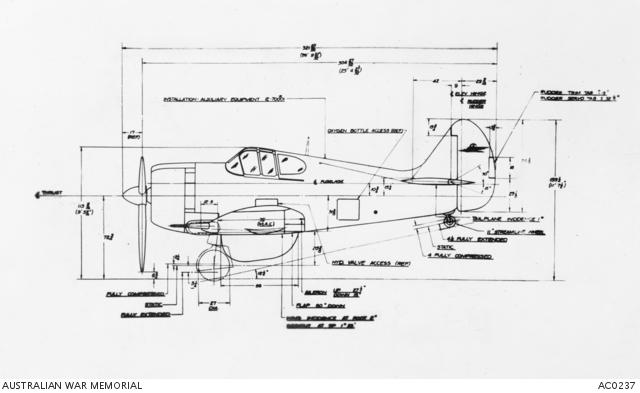
Picture with courtesy of Australian War Memorial (http://www.awm.gov.au)
Le Directeur Général de la CAC, Lawrence Wackett et le Chef Ingénieur Fred David, commencèrent le développement du Boomerang à l’usine de Fishermans Bend (Melbourne) le 21 Décembre 1941. David était un réfugié juif autrichien qui avait travaillé pour Heinkel et Mitsubishi avant guerre (notamment sur le Heinkel 112 et sur le Zéro A6M).
CAC general manager Lawrence Wackett and chief designer Fred David began detailed design work at the CAC factory in Fishermans Bend (Melbourne) on 21st December 1941. David was a Jewish refugee from Austria, who had worked for Heinkel as well as for Mitsubishi before the war (including the Heinkel 112 and A6M Zero).
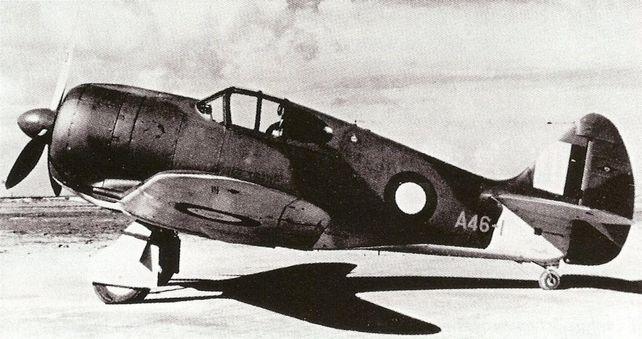 Boomerang CA-12 A46-1 - N°1 Aircraft Performance Unit, Laverton 1943
Boomerang CA-12 A46-1 - N°1 Aircraft Performance Unit, Laverton 1943
Prototype n°1 de la série CA-12 - Prototype n°1 of CA-12 series
Photo : source inconnue - Unknown source
La RAAF commanda 105 Boomerang CA-12 (Mk I) le 2 (ou le 18) février 1942, avant même le premier vol du prototype le 29 mai 1942. Le Boomerang était un petit chasseur avec des ailes courtes et un fuselage court de bois et d’aluminium. Les tests en vol du CA-12 se révélèrent satisfaisants.
The RAAF ordered 105 CA-12 (Mk I) Boomerangs on 2 (or 18) February 1942, before the prototype first flew on 29th May 1942. The Boomerang was a small fighter with short wings and a short wood and aluminium fuselage. Test flights found that the CA-12 handled well.

Le premier vol du CA-12 Boomerang le 29 mai 1942.
The maiden flight of the Boomerang, 29th May, 1942.
Picture with courtesy of Australian War Memorial (http://www.awm.gov.au)
Il était très bien armé avec deux canons de 20 mm et 4 mitrailleuses de 7.7 mm dans les ailes. Cependant, les performances générales étaient médiocres, surtout au dessus de 15000 pieds (4600 m) et sa vitesse maximale de 490 km/h en faisait un piètre adversaire pour le Zéro.
It was very well-armed, with two 20 mm cannon and four 7.7 mm machine guns in the wings. However, general performance was mediocre, especially over 15,000 ft (4,600 m), and its maximum speed of 265 knots (490 km/h) was not sufficient to make it an effective counter to the Zero.
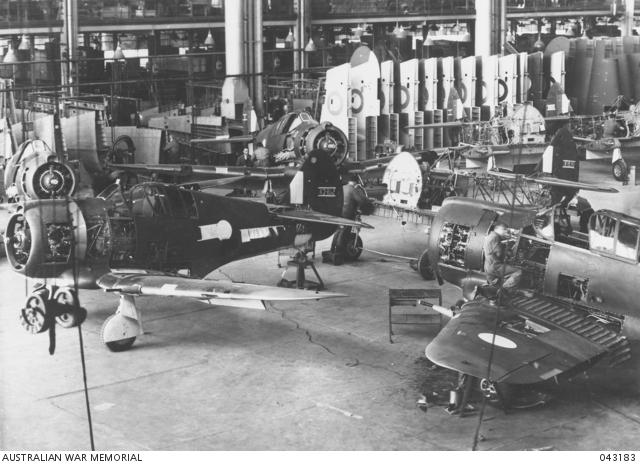
Boomerang en construction à l’usine CAC de Fishermen’s Bend.
Boomerangs under construction at CAC's factory at Fishermen's Bend.
Picture with courtesy of Australian War Memorial (http://www.awm.gov.au)
C’est pourquoi au début de 1942, la version CA-14 fut développée avec le moteur US Wright-Cyclone R-2600 de 1700 CV (1268 kW) pour corriger les défauts de vitesse, montée et plafond du CA-12. Cependant, les 145 moteurs cyclones commandés n’étant pas livrés dans les délais, Wackett ordonna mi 1942 l’utilisation du Pratt & Whitney R-2800 de 1850 CV (1380 kW), fabriqué dans l’usine de Lidcombe.
As a result, by early 1942 the CA-14 variant was being designed, around the U.S.-built, 1,700 hp (1,268 kW) Wright Cyclone R-2600 engine, to address the CA-12's deficiencies in speed, climb and ceiling. However, the 145 Cyclones ordered were not delivered as scheduled, and in mid-1942 Wackett authorised use of the 1,850 hp (1,380 kW) Pratt & Whitney R-2800, manufactured in the factory in Lidcombe.
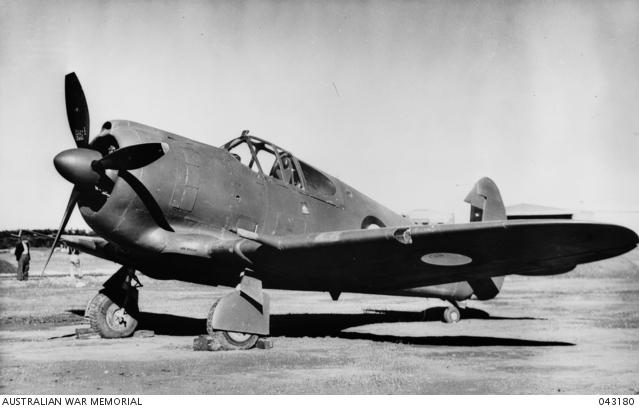
CAC Boomerang - Fishermen’s Bend.
Picture with courtesy of Australian War Memorial (http://www.awm.gov.au)
Cependant, le poids sensiblement plus grand de ce moteur entraînait un risque inacceptable pour le train d'atterrissage. La CAC est donc revenue au moteur initial de 1200 CV, auquel fut ajouté un turbocompresseur General Electric avec ventilateur adapté et un plus grand gouvernail de direction.
However, the significantly greater weight of this powerplant led to an unacceptable risk of undercarriage failure. CAC eventually returned to the former 1,200 HP engine, to which was added a General Electric turbo-supercharger with a geared cooling fan and a larger rudder.

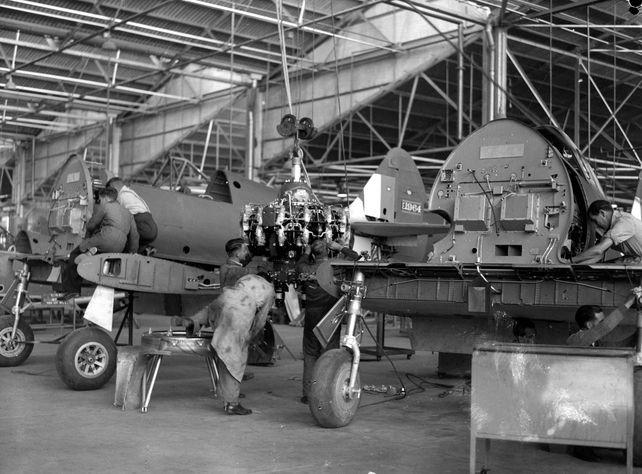
Boomerang à l’assemblage - Boomerang on the assembly line.
© United States Library of Congress # FSA8E01090 (http://www.loc.gov) - Domaine public - Public domain
En juillet 1943, le prototype CA-14 sensiblement modifié, maintenant connu sous le nom de CA-14A, avait une vitesse supérieure de 25-30% par rapport au CA-12, et un plafond opérationnel qui 4000 pieds (1200 m) plus élevé. Cependant, des Spitfires anglais et des Mustangs américains avaient été commandés par l’Australie. De plus, le développement du CA-15 Kangaroo avait commencé. En conséquence, les Boomerangs produits ne furent jamais équipés des turbocompresseurs.
By July 1943, the significantly re-worked CA-14 prototype, now known as the CA-14A, had a top speed which was 25–30% better than the CA-12, and an operational ceiling which was 4,000 ft (1,200 m) higher. However, some English Spitfires and American Mustangs had been ordered by Australia. Moreover, the development of the CA-15 had started. Consequently, production Boomerangs were never fitted with superchargers.
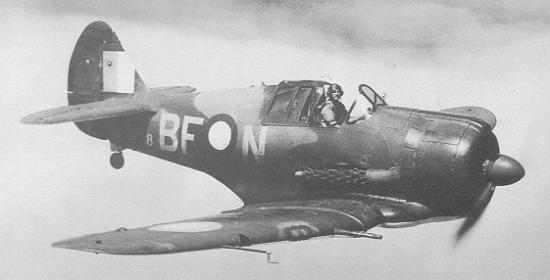
Picture with courtesy of Australian War Memorial (http://www.awm.gov.au)
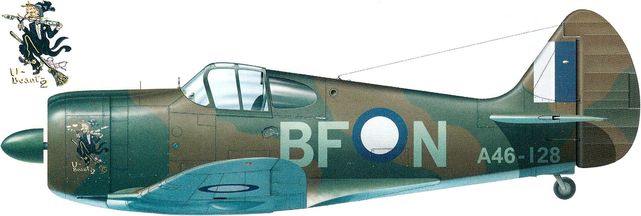
© Jean-Marie Guillou
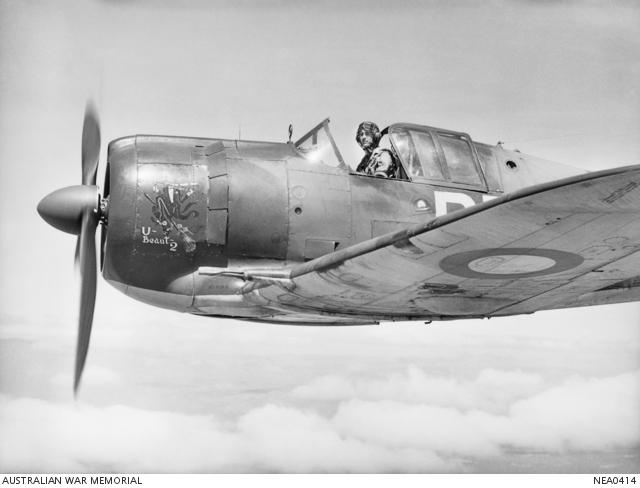
Picture with courtesy of Australian War Memorial (http://www.awm.gov.au)
Boomerang CA-13 "U-Beaut-2" (A46-128), Flight Lt. D.H. Goode - No. 5 Squadron
Mareeba (Queensland) - Mars 1944 - March, 1944
 Les boomerangs ont subi diverses améliorations et modifications regroupées autour de trois désignations de CAC : CA-12, CA-13 et CA-19. Un total de 250 avions ont été construits : 105 CA-12, (numéros de série RAAF A46-1/105), 95 CA-13 (A46-106/200) et 49 CA-19 (A46-201/249). Les CA-13 et les CA-19 sont parfois connus sous le nom de Boomerang Mk II. L’unique CA-14A a été employé pour la recherche par la No. 1 Aircraft Performance Unit RAAF.
Les boomerangs ont subi diverses améliorations et modifications regroupées autour de trois désignations de CAC : CA-12, CA-13 et CA-19. Un total de 250 avions ont été construits : 105 CA-12, (numéros de série RAAF A46-1/105), 95 CA-13 (A46-106/200) et 49 CA-19 (A46-201/249). Les CA-13 et les CA-19 sont parfois connus sous le nom de Boomerang Mk II. L’unique CA-14A a été employé pour la recherche par la No. 1 Aircraft Performance Unit RAAF.
Boomerangs underwent various improvements and modifications, which were grouped under three CAC designations: CA-12, CA-13 and CA-19. A total of 250 aircrafts were built : 105 CA-12s, (RAAF serial numbers A46-1/105), 95 CA-13s (A46-106/200) and 49 CA-19s (A46-201/249). The CA-13 and CA-19 are sometimes known collectively as the Boomerang Mark II. The sole CA-14A was used for research by No. 1 Aircraft Performance Unit RAAF.
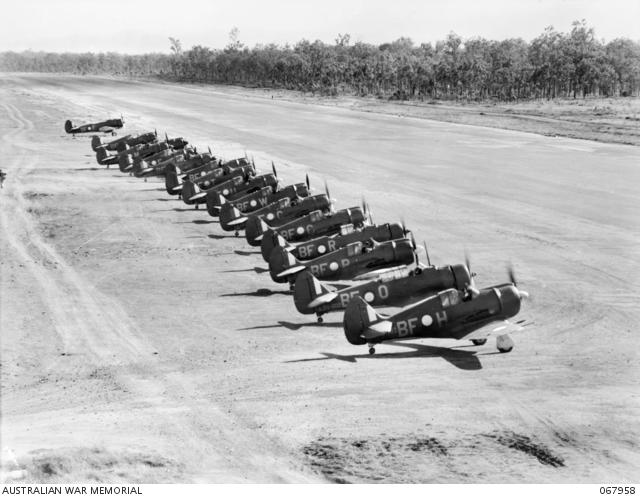
Boomerang & Wirraway, NO. 5 Squadron, Mareeba airfield, 21/07/1944
Picture with courtesy of Australian War Memorial (http://www.awm.gov.au)
Versions - Variants
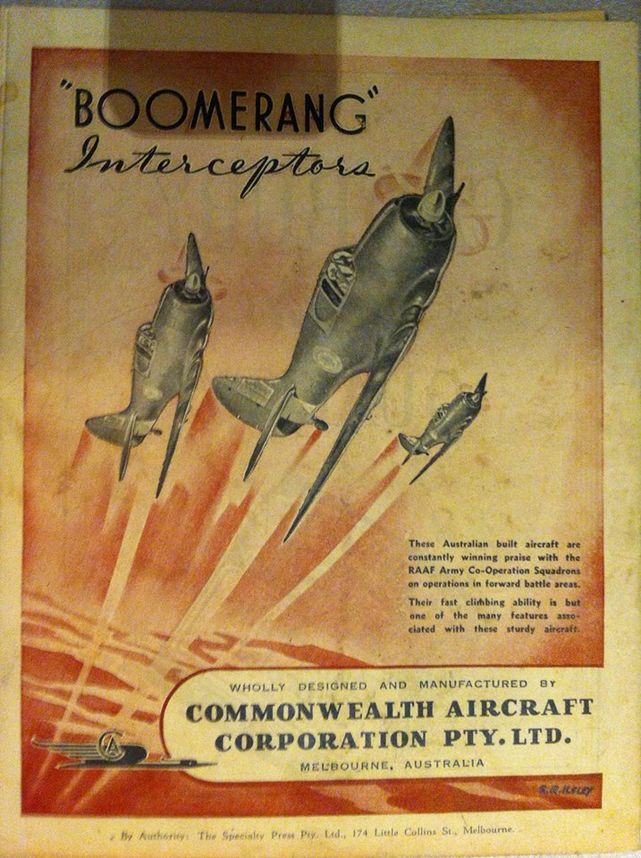
Magazine RAAF Wings, 1945
CA-12 (Mark I)
105 fabriqués et livrés de juin 1942 à juin 1943. Numéros de série de A46-1 à A46-105. Le A46-103 fut équipé d'un nouveau bord d'attaque.
105 built and delivered from June, 1942 to June, 1943. Serial numbers A46-1 to A46-105. The A46-103 was fitted with a new leading edge.
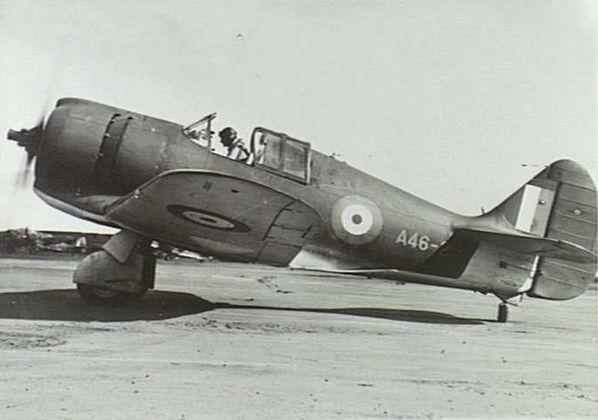
Boomerang CA-12 A46-2 - Août 1942 - August 1942
Picture with courtesy of Australian War Memorial (http://www.awm.gov.au)
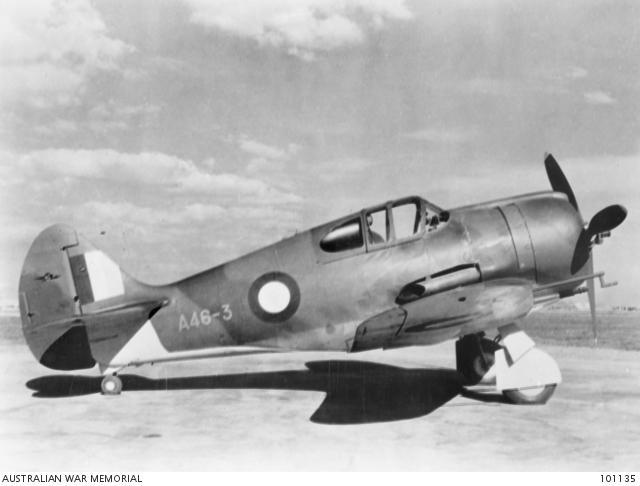
Boomerang CA-12 - No 2 OTU puis No 8 OTU - No 2 OTU and then No 8 OTU.
Picture with courtesy of Australian War Memorial (http://www.awm.gov.au)
 CA-13 (Mark II)
CA-13 (Mark II)
Version améliorée du CA-12, 95 fabriqués d'août 1943 à mai 1944. Numéros de série de A46-106 à A46-200. Le A46-121 fut équipé de carénage pour camera et le A46-157 d'un ventilateur de capot.
Improved version of the CA-12, 95 built from August, 1943 to May, 1944. Serial numbers A46-106 to A46-200. The A46-121 was fitted with a camera and the A46-157 with a fan for the hood.
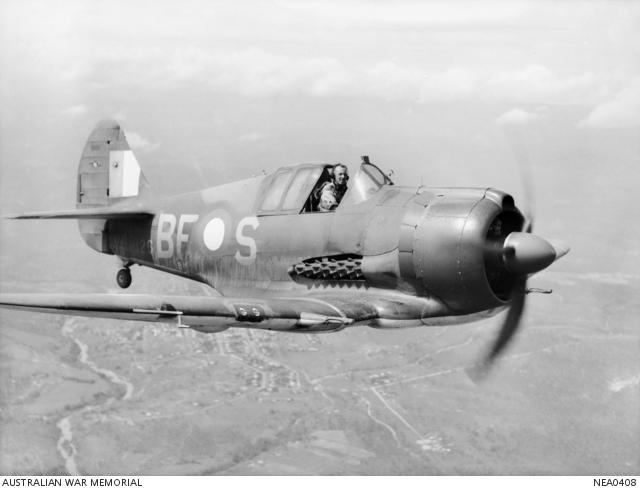
Boomerang CA-13 'Sinbad II' BF-S (A46-126)
No 5 Squadron RAAF, Flight Lieutenant A. W. B. Clare, Mareeba, Queensland, 15/03/1944.
Pictures with courtesy of Australian War Memorial (http://www.awm.gov.au)

Boomerang CA-13 'Sinbad II' (BF-S) - No 5 Squadron RAAF.
Le 14/7/1944, son pilote le F/O Cecil Reginald Warbrooke creva un pneu au décollage de Mareeba (Queensland) et se crasha sur le ventre (pilote sain et sauf).
On 14/7/1944, its pilot, the F/O Cecil Reginald Warbrooke, blew a tyre on take off from Mareeba (Queensland) and crashed onto its belly (pilot was OK).
© Dekker Art Work - Thierry Dekker http://dekker-artwork.blogspot.fr
CA-14
Equipé d'un turbocompresseur, un seul modèle fabriqué et modifié pour devenir CA-14A. Numéro de série A46-1001.
Fitted with a turbo-supercharged engine, only one unit modified to become CA-14A. Serial number A46-1001.
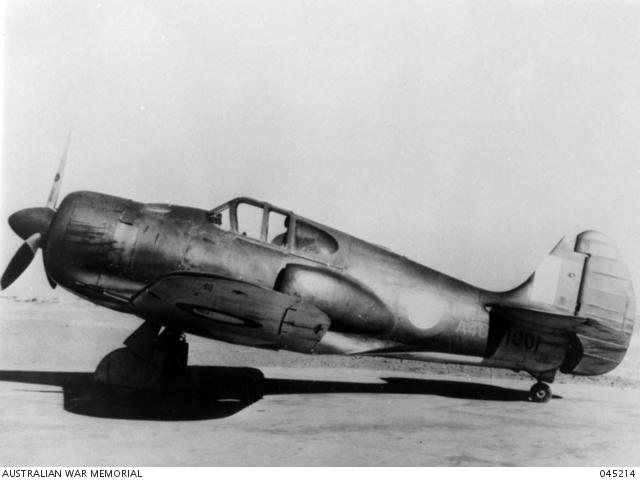
Boomerang CA-14
Pictures with courtesy of Australian War Memorial (http://www.awm.gov.au)
CA-14A
Le prototype de CA-14 (A46-1001) fut modifié pour avoir une queue et un gouvernail carré.
The CA-14 prototype (A46-1001) was modified to have a square tail and rudder
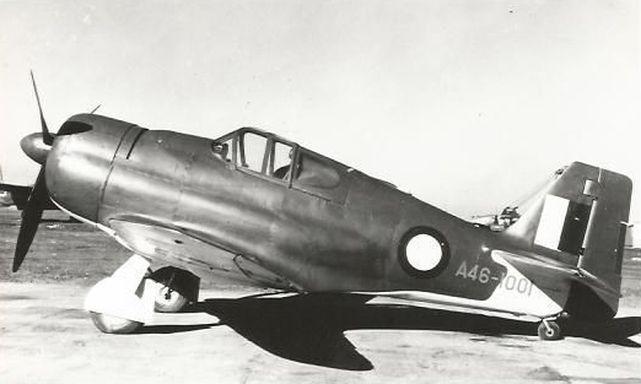

Boomerang CA-14A A46-1001, No. 1 Aircraft Performance Unit, Laverton, 1944.
Photos : author unknown - auteur inconnu
CA-19 (Mark II)
Version de reconnaissance tactique avec une caméra verticale Fairchild F-4 dans le fuselage, 49 fabriqués de mai 1944 à février 1945. Numéros de série de A46-201 à A46-249. Les A46-211 à A46-249 étaient équipés de logements pour caméras.
Tactical reconnaissance variant with a single vertical camera Fairchild F-4 in the fuselage, 49 built from May, 1944 to February, 1945. Serial numbers A46-201 to A46-249. Models A46-211 to A46-249 were fitted with camera mounting areas.
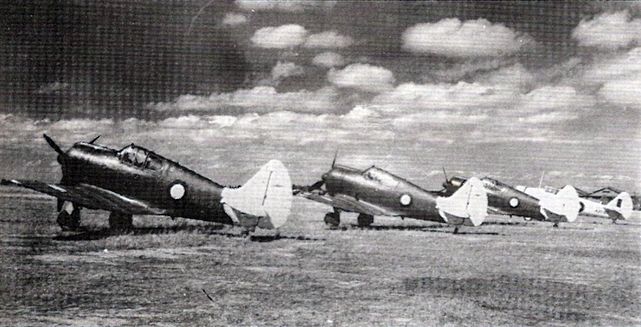
Boomerang CA-19 - Photos : author unknown - auteur inconnu
Fiche technique - Technical data
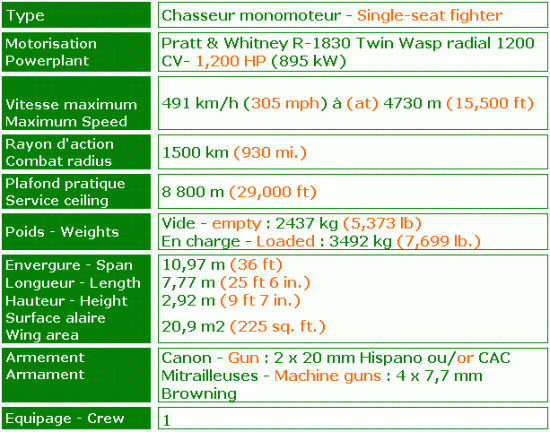
Théâtres d'opérations
Operational history
Deux des trois premières unités opérationnelles sur Boomerang, les Squadron 83 et 85 furent utilisés à la défense du territoire. Le Squadron 84 fut déployé sur Horn Island à Torres Strait et en Nouvelle Guinée Hollandaise (Papouasie de l'Ouest), pour pallier au manque continuel de chasseurs dans la région.
Two of the first three operational Boomerang units, No. 83 Squadron and No. 85 Squadron, were used for home defence. No. 84 Squadron was deployed to Horn Island in Torres Strait and Dutch New Guinea (West Papua), to address the continuing shortage of fighters in this area.
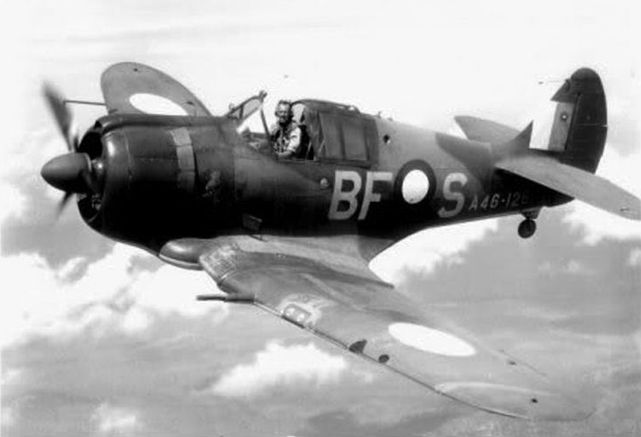
Boomerang CA-13 'Sinbad II' (BF-S) - No 5 Squadron RAAF.
Photo : author unknown - auteur inconnu
A cause de sa faible vitesse maxi et de sa mauvaise performance en altitude, le Squadron 84 eu rarement l'occasion d'être suffisamment près des avions Japonais pour utiliser leurs armes. Heureusement, il n'y eu que peut de raids dans cette région, et après avoir utilisé ses Boomerang pendant huit mois, le Squadron 84 passa aux Kittyhawk.
Because of its low top speed and poor high altitude performance, the No. 84 Squadron could rarely get close enough to Japanese aircraft to bring their guns to bear. Fortunately, there were not many air raids in this area, and after using Boomerangs for eight months No. 84 Squadron upgraded to the Kittyhawk.
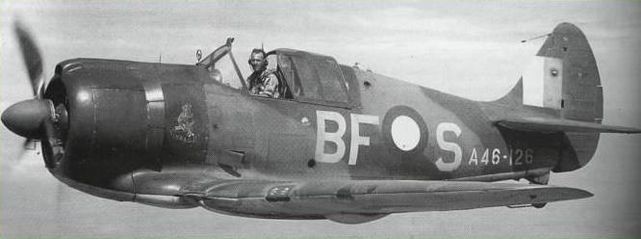
Boomerang CA-13 'Sinbad II' (BF-S) - No 5 Squadron RAAF.
Photo : author unknown - auteur inconnu
Le Boomerang trouva sa réelle utilité comme avion de soutien rapproché : des petites unités proches des troupes au sol. Les Squadrons 4 et 5 volèrent sur Boomerang en Nouvelle Guinée, pendant les campagnes des Iles Salomon et de Bornéo avec un certain succès. Volant par paire (un pour observer le sol, l'autre pour observer les airs alentour), leurs tâches consistaient au bombardement, au mitraillage, au support d'infanterie et au repérage pour l'artillerie.
The Boomerang found its real use as a close support aircraft : small unit actions close to the troops on the ground. No. 4 Squadron and No. 5 Squadron flew Boomerangs in New Guinea, the Solomon Islands Campaign and Borneo Campaign with marked success. Flying in pairs (one to observe the ground, the other to observe the air around them), their tasks included bombing, strafing, infantry support and artillery spotting.
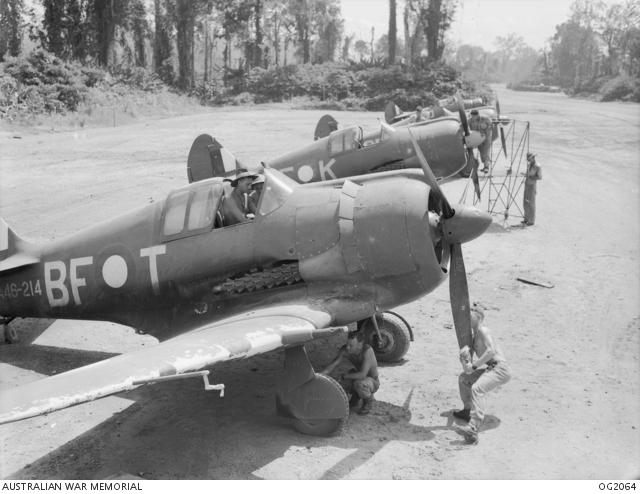
Boomerang - No. 5 Squadron - Piva Airfield, Bougainville,12/01/1945.
Picture with courtesy of Australian War Memorial (http://www.awm.gov.au)
Lorsqu'ils attaquaient des formations ennemies plus larges, les Boomerang opéraient souvent en conjonction avec des avions plus gros pour confirmer l'identité des cibles en les marquant avec des bombes fumigènes de 9 kg (20 lb). Le partenariat entre les Boomerang du Squadron n°5 et les chasseurs bombardiers Corsair de la Royal New Zealand Air Force fut reconnu comme particulièrement efficace.
Un autre utilisateur de Boomerang en Nouvelle Guinée fut l'Unité de Communication n°8, qui utilisa l'avion pour assister les opérations de sauvetage en mer.
When attacking larger enemy formations, Boomerangs often operated in conjunction with larger aircraft to confirm the identity of the target by marking it with a 20 lb (9 kg) smoke bomb. The partnership between 5 Squadron Boomerangs and Royal New Zealand Air Force Corsair fighter bombers during the Bougainville Campaign was said to be particularly effective.
The other user of Boomerangs in New Guinea was No. 8 Communications Unit, which used the aircraft to assist with air sea rescue operations.
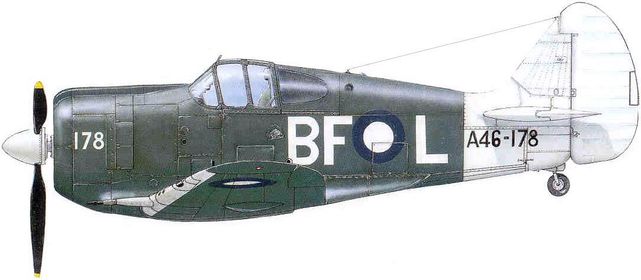
Boomerang CA-13 - No 5 Squadron RAAF, Bougainville - 1945.
© Dekker Art Work (Thierry Dekker) : http://dekker-artwork.blogspot.fr
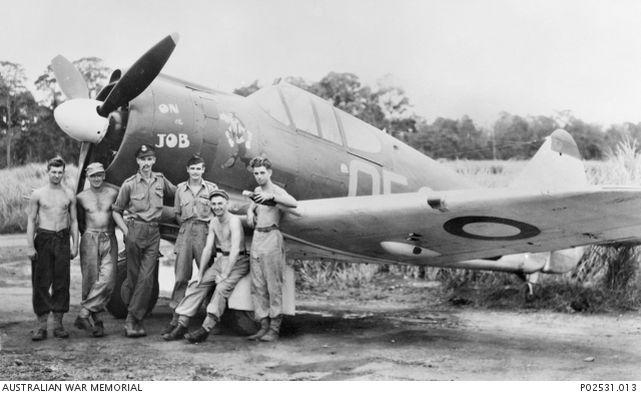
Un Boomerang du Squadron N° 4 à Nazdab, Nouvelle guinée, octobre 1943.
A No. 4 Squadron Boomerang at Nadzab, New Guinea in October 1943.
Picture with courtesy of Australian War Memorial (http://www.awm.gov.au)
No. 2 Operational Training Unit (10/10/1942 - 1945)
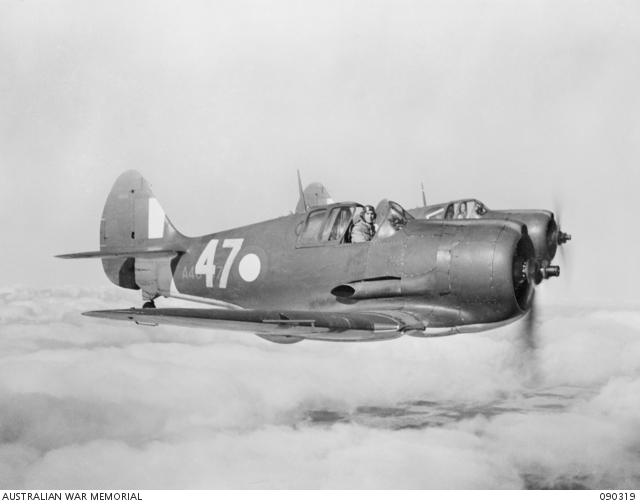
2 x Boomerang CA-12, No. 2 OTU, Mildura (Victoria)
Picture with courtesy of Australian War Memorial (http://www.awm.gov.au)
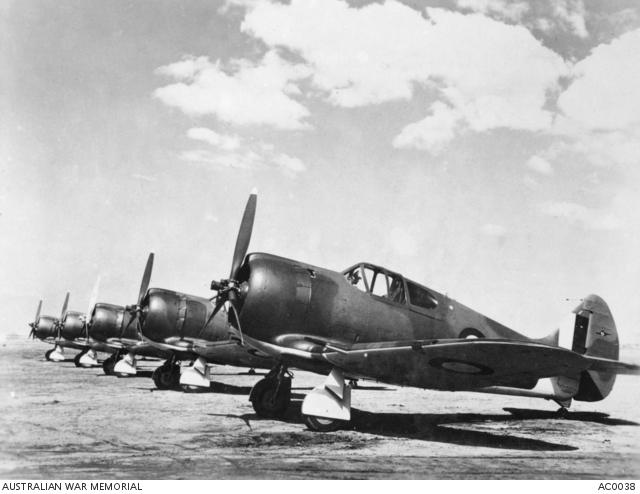
Boomerang, No. 2 OTU, Mildura (Victoria)
Unité non confirmée - Unit not confirmed
Picture with courtesy of Australian War Memorial (http://www.awm.gov.au)
No. 4 Squadron (08/1943 - 08/1945) - Code : QE
Créé en 1916, dissout après la guerre puis recréé en juin 1940, il est équipé de Boomerang le 15 juin 1943. Commandé par le Squadron Leader W.F. Allshorn, il est affecté à Berry Field, près de Port Moresby (Nouvelle-Guinée). Les sorties sont presques quotidiennes et les combats fréquents. Le 5 juillet 1943 à Nassau, le A46-88, piloté par le Pilot Officer J.K.Collier est pris pour cible par erreur par la DCA américaine.
Created in 1916, dissolved after the war and then created again in June, 1940, it was equipped with Boomerang on June 15th, 1943. Commanded by Squadron Leader W.F. Allshorn, it was assigned to Berry Field, Port Moresby (New Guinea). The missions were almost daily and fights were frequent. On July 5th, 1943 in Nassau, the A46-88, flown by the Pilot Officer J.K.Collier was hit by mistake by the American Anti-Aircraft guns.
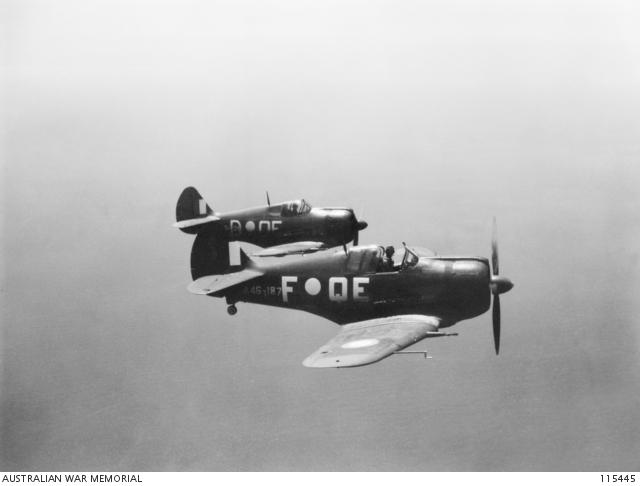
2 x Boomerang, No. 4 Squadron, Labuan Island, 30/08/1945
Picture with courtesy of Australian War Memorial (http://www.awm.gov.au)
L'avion heurte l'eau et le pilote est tué sur le coup en heurtant le collimateur. Suite à l'accident, les collimateurs seront démontés, n'étant pas utiles en mission de reconnaissance. Le 6 août 1943, le Flying Officer T.T. Ludlow est porté disparu après une rencontre avec un ennemi sur Hopoi. Son corps ne sera retrouvé qu'en novembre 1948. Le Flying Officer S.H. Trumper (A46-111) disparaît également le 30 octobre lors d'une mission de mitraillage sur Ketoba.
The plane hit the water and the pilot was killed by striking the collimator. Further to the accident, collimators were removed from aircrafts, as they were not useful in reconnaissance mission. On August 6th, 1943, the Flying Officer T.T. Ludlow was reported missing after a fight with an enemy on Hopoi. His body was found only in November, 1948. The Flying Officer S.H. Trumper (A46-111) also disappeared on October 30th during a mission of machine-gunning on Ketoba.

Boomerang CA-13 A46-199 - No 4 Squadron RAAF - Photo : Source inconnue - Source unknown
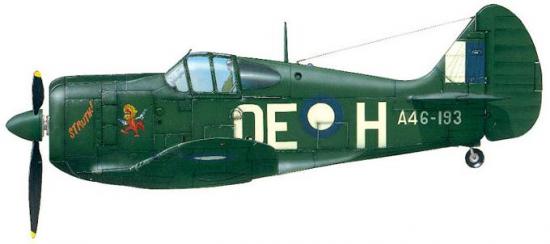
Boomerang CA-13 'Struth' - No 4 Squadron RAAF, Lubuan - 1945.
© Dekker Art Work (Thierry Dekker) : http://dekker-artwork.blogspot.fr
Le A36-136 est descendu par un avion américain le 15 novembre 1943 mais le pilote, le Flying Officer R.M. Stewart s'en sortira après un atterrissage d'urgence.Le 26 novembre, le Flight Sergeant A.J. Salter et le Flying Officer H. Munro (A46-109 et A46-132) seront abattus par 7 Zéros et "portés disparus". Le 31 décembre 1943, c'est le Flying Officer E.R. Staley (A46-134) qui disparaît lors d'une mission de réglage d'artillerie. En janvier 1944, des missions d'attaque au sol se succèdent sur la crète Shaggy Ridge ; pour ces missions, le Flight Lieutenant P.S. Ambrose recevra la DFC et trois autres pilotes seront cités. A partir d'avril, les pilotes se tuent malheureusement deux par deux : les Flying Officers J. Dahn (A46-119) et R. Hindmarsh (A46-148) ne rentrent pas, probablement victimes d'une collision.
The A36-136 was shot down by an American aircraft on November 15th, 1943 but the pilot, Flying Officer R.M. Stewart was safe despite an emergency landing. On November 26th, the Flight Sergeant A.J. Salter and the Flying Officer H. Munro (A46-109 and A46-132) were shot down by 7 Zéros and "reported missing". On December 31st, 1943, the Flying Officer E.R. Staley (A46-134) disappeared during a mission of artillery regulation. In January, 1944, missions of ground attack were conducted on the crest Shaggy Ridge ; for these missions, the Flight Lieutenant P.S. Ambrose received the DFC and three other pilots were Mentioned in Despatches (MiD). From April, pilots were unfortunately killed two by two : the Flying Officers J. Dahn (A46-119) and R. Hindmarsh (A46-148) did not came back, probably victims of a collision.

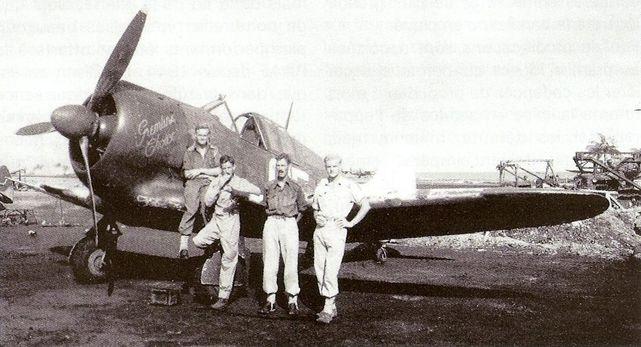
Boomerang CA-13, A46-198 "Gremlin's Choice", Flight Lt Clive Frees, No. 4 Sqn
Sepinggan airfield, Balikpapan (Borneo)
Photo : author unknown - auteur inconnu

Boomerang CA-19 A46-217, No. 4 Squadron
Morotai (Halmareha) - Début 1945 - Early 1945 © Jean-Marie Guillou
Le 2 mai, le Flying Officer R.R. Paxton (A46-116) disparaît vers Madukinam et le F.O. Perry -A46-172) saute lors d'un vol d'essai mais le parachute ne s'ouvre pas. Deux autres pilote se tuent le 4 mai dont le F.O. K.A. Linklater qui percute un arbre en mitraillant une position japonaise à Golodi (Nouvelle Bretagne). Puis deux autres encore le 27 juin. 4 DFC seront néanmoins attribuées le 9 juillet (F. Lt. P.S. Dickson, Holyman, Carter et Mauger) et cinq citations (dont une à titre posthume au F.O. E.R. Staley). Le 17 novembre, le Squadron Leader Daly (A46-149) est abattu et tué dans les lignes japonaises. Le dernier tué du Squadron sera le F.O. Skuthorp (A46-181) touché par des tirs venus du sol et qui s'écrase à Wewak. Le 28 mars 1945, le No. 4 Sqn est retiré des opérations. Il ne reprendra du service que le 20 juin pour des missions de reconnaissance sur Bornéo.
On May 2nd, the Flying Officer R.R. Paxton (A46-116) disappeared around Madukinam and the F.O. Perry (A46-172) jumped during a test flight but the parachute did not open. Two others pilots were killed on May 4th and among them the F.O. K.A. Linklater who hit a tree by machine-gunning a Japanese position in Golodi (New Brittany). Then two pilots on June 27th. 4 DFCs were nevertheless awarded on July 9th (F. Lt. P.S. Dickson, Holyman, Crankcase and Mauger) and five MiDs (including one posthumously to the F.O. E.R. Staley). On November 17th, the Squadron Leader Daly (A46-149) was shot down and killed in the Japanese lines. The last person killed of the Squadron was the F.O. Skuthorp (A46-181) who was touched by shoots coming from the ground and who crashed at Wewak. On March 28th, 1945, the No. 4 Sqn was removed from operations. It came back into service only on June 20th for reconnaissance missions on Borneo.
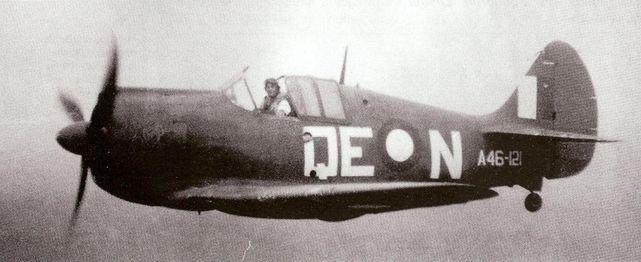
Photo : author unknown - auteur inconnu

© Dekker Art Work (Thierry Dekker) : http://dekker-artwork.blogspot.fr
Boomerang CA-13, A46-121 "Olga", No. 4 Sqn - Lubuan - 1945.
 No. 5 Squadron (11/1943 - 11/1946) - Code : BF
No. 5 Squadron (11/1943 - 11/1946) - Code : BF
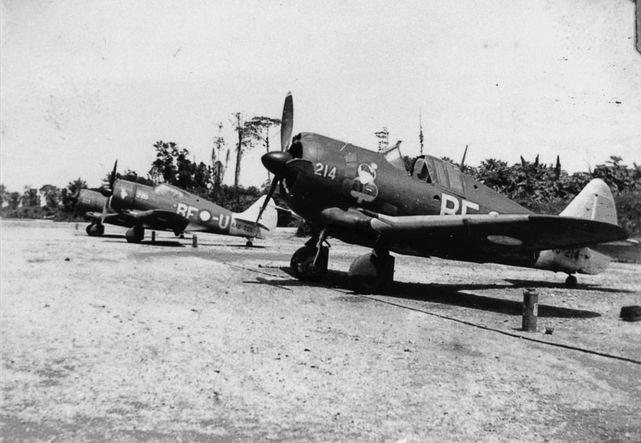
CAC Boomerang, No. 5 Sqn, Bougainville - 1944
© State Library of Queensland - Domaine public - Public domain
Le 9 janvier 1941, le nouveau No. 5 Squadron (un premier No. 5 Sqn avait été initialement rebaptisé No. 9 Sqn) est créé à Laverton. Il reçoit ses Boomerang le 2 novembre 1943 et part sur Torokina, une île de Bougainville dans l'archipel des Salomon avec 18 d'entre eux (et 4 Wirraway).
On January 9th, 1941, the new No. 5 Squadron (the first one No. 5 Sqn had initially been renamed No. 9 Sqn) is created at Laverton. It received its first Boomerang on November 2nd, 1943 and moved on Torokina, an island of Bougainville in the Solomon archipelago with 18 of them (and 4 Wirraway).
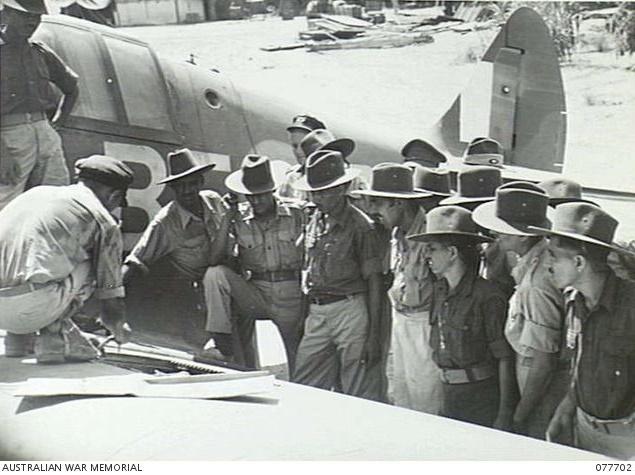
Boomerang, No. 5 Sqn, Bougainville - 23/12/1943, Piva Airstrip, Torokina (Bougainville Island)
F/O R.H. Glassop montre les mitrailleuses de l'avion à des hommes du 1er Régiment Indien de DCA
F/O R.H. Glassop shows machine-guns of the aircraft to the troops of 1st Indian Anti-Aircraft Regiment
Picture with courtesy of Australian War Memorial (http://www.awm.gov.au)
La première mission a lieu le 24 du même mois. L'unité se spécialise dans le marquage d'objectifs par bombes fumigènes ou par mitraillage ; le 7 décembre par exemple, 2 Boomerang mitraillent un campement japonais à Akorapia juste avant qu'il soit bombardé par 8 Corsairs néo-zélandais.
The first mission took place on the 24th November. The unit specialized itself in the marking of objectives by smoke bombs or by machine-gunning ; On December 7th for example, 2 Boomerang machine-gunned a Japanese camp to Akorapia just before it was bombed by 8 New Zealand Corsairs.
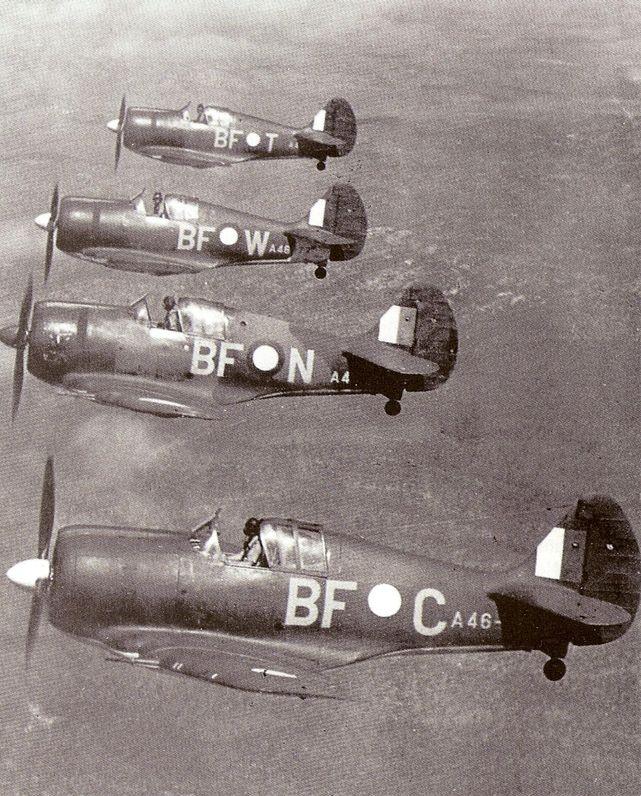
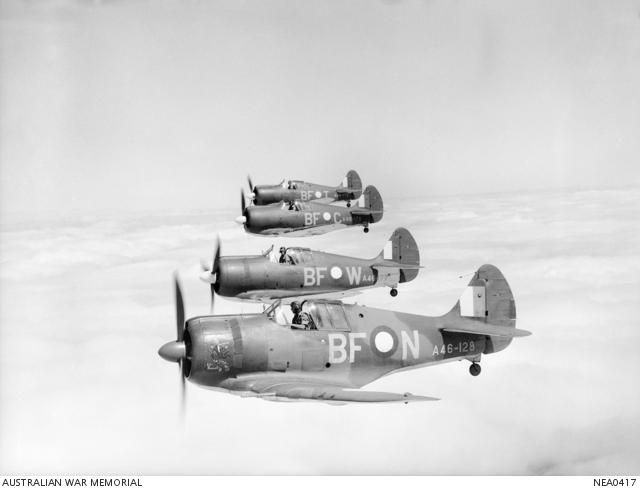
4 x Boomerang CA-13, No. 5 Sqn, Bougainville - Avril 1944 - April, 1944
A46-128 (BF-N) - A46-177 (BF-W) - A46-175 (BF-C) - A46-176 (BF-T)
Picture with courtesy of Australian War Memorial (http://www.awm.gov.au)
